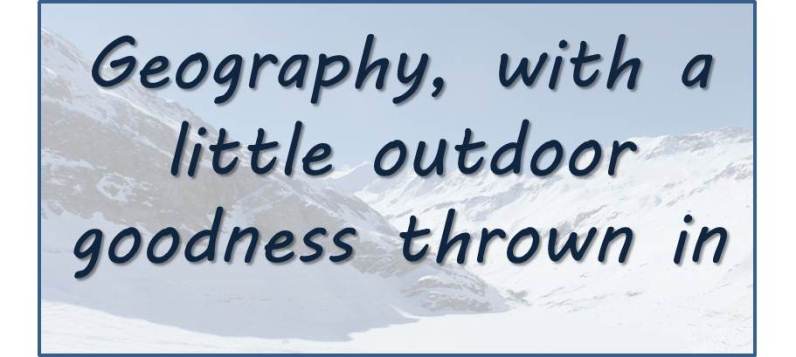John and I have been on the road for a couple of days now working our way up the north of Iceland passing places such as Hvammstagi and Blondous. We've seen some stunning views and encountered some pretty cool geography along our way including basalt dykes, roche moutanees and massive slope failures. We got to within a few miles of the arctic circle when we camped on the Vatnsnesvgar peninsula on Wednesday night. Its been wall-to-wall sunshine (literally, as it hasn't been dark yet) as the UK seems to be getting the worst of the weather whilst we bask in the high pressure.
 |
| Chasing the midnight sun at 66 degrees north. Photo: Alasdair Monteith, 2012 |
Anyway, we're well underway with the pit digging in search of the ash layers from a number of
Hekla eruptions that I described in a
previous post. But how do we know we'll find ash when we dig? What does it look like? and how can we be sure which volcano it is from?
Past research has logged the extent of the Hekla eruptions ash coverage and the depth of the ash deposits in different sites across the whole of Iceland. We're moving around Iceland again measuring the depth of ash from the Hekla eruption but also collecting measured samples at each site to estimate the density of the ash and noting down the characteristics of the ash.
Finding a site
Whilst driving around the roads and tracks we're keeping our eyes out for drainage ditches and streams which have cut down into the ground and revealed the soil on either side. Each pit starts off a bit of mystery as we see if we can find the main
layers of from the big Hekla eruptions. These are numbered H1, H3 and H4 as you get deeper, and are roughly 1000, 3000 and 4000 years old. There was once a layer called H2, but when closer investigation revealed that it was actually under H3, it had to get a new name.
With good sites you can spot the ash layers (in white in the photo below) from a fair distance away. This works well until you find a site which has been altered significantly by large scale flooding or other processes. The Hekla deposits are noticeable in this northern area of Iceland for their distinct colour; it will becoming much harder to identify them from other ash layers the further south and closer to the volcanic region we go.
 |
| Example of a sampling site. How many ash layers do you think you can find in this photo? Photo: John Stevenson, 2012 |
In the photo above you can see the white ash that we think is Hekla 4 in the fat white layer, this is predominately rhyolite - think of the stuff the rocks in the
Lake District at places such as Langdale are made of. The
slightly grey marks on the top of it show where the volcano started
throwing out ash which was made up more of Andesite and Dacite, ash of
slightly different compositions to rhyolite, near the end of the
eruption.
We spend a wee bit of time at each site checking out the soil wall before digging away excess grass and covering soil with spades and hopefully defining different layers in the process. With a lot of the sites we know to stop digging down when we hit boulder clay, the material deposited by glaciers at the end of the last ice age approximately 10,000 years ago. From here upwards the ash layers emerge as white, creamy or grey.
 |
The art of sampling! Photo: John Stevenson, 2012
|
Once we're happy with a section we measure how thick the layers are and
where they sit in relation to the surrounding soil and boulder clay. John gets to work logging the characteristics of the ash layers such as size of the ash grains, the colour, as well as sketching the soil profile in his notebook. Meanwhile, I use a variety of tools all mainly used for wallpapering and DIY at home to carefully extract a small section of each ash layer as uncontaminated from the soil as possible. I then measure the size of the sample and then bag it. Then tidy up the site an on to the next area!
It's been a cool couple of days as we meet various people along the way and experience Iceland's awesome environment and friendly culture. Whilst sampling in a stream on Thursday night, a guy who owned the surrounding farmland came and inquired what we were doing. It turned out he was a Principal of a local school and is subsequently going to teach the kids about the ash under their feet and show them how the volcanoes of the south affect them in the north.
We're off down to Akureyri tomorrow (second largest settlement in Iceland) then we either go cross country to the area around the Hekla volcano or continue around the East coast sampling as we go.


































